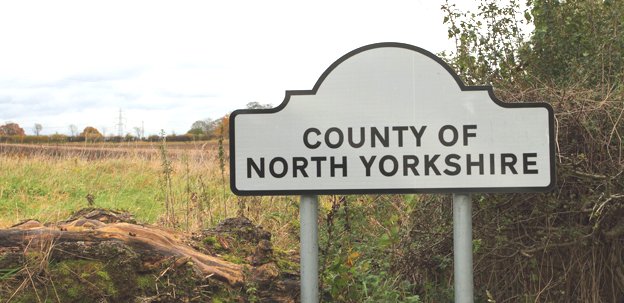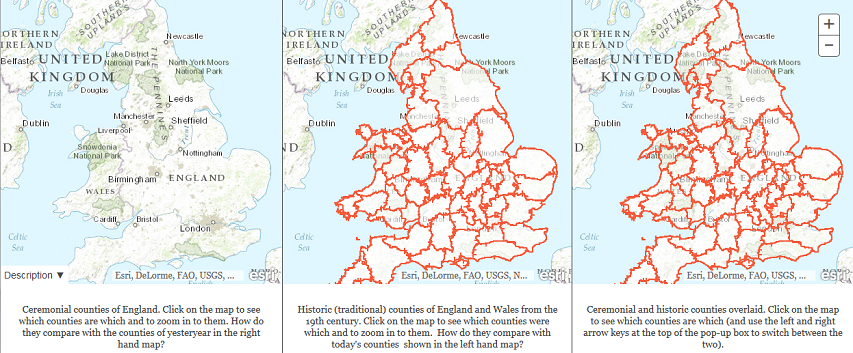Bee Here Now
Published 23 Oct 2023The Stockton-Darlington Railway wasn’t the first time steam locomotives had been used to pull people, but it was the first time they had been used to pull passengers over any distance worth talking about. In 1825 that day came when a line running all the way from the coal pits in the hills around County Durham to the River Tees at Stockton was opened officially. This was an experiment, a practice, a great endeavour by local businessmen and engineers, such as the famous George Stephenson, who astounded crowds of onlookers with the introduction of Locomotion 1 halfway along the line, which began pulling people towards Darlington and then the docks at Stockton.
This was a day that would not only transform human transportation forever, but accelerate the industrial revolution to a blistering pace.
In this video I want to look at what remains of that line — not the bit still in use between the two towns, but the bit out in the coalfields. And I want to see how those early trailblazers tackled the rolling hills, with horses and stationary steam engines to create a true amalgamation of old-world and new-world technologies.
(more…)
February 16, 2024
What remains of the “first” steam powered passenger railway line?
February 19, 2023
Flower-Class Corvettes – WW2 Atlantic Defender
Matsimus
Published 29 Jun 2020The Flower-class corvette (also referred to as the Gladiolus class after the lead ship) was a British class of 294 corvettes used during World War II, specifically with the Allied navies as anti-submarine convoy escorts during the Battle of the Atlantic. Royal Navy ships of this class were named after flowers, hence the name of the class.
The majority served during World War II with the Royal Navy (RN) and Royal Canadian Navy (RCN). Several ships built largely in Canada were transferred from the RN to the United States Navy (USN) under the lend-lease programme, seeing service in both navies. Some corvettes transferred to the USN were manned by the US Coast Guard. The vessels serving with the US Navy were known as Temptress and Action-class patrol gunboats. Other Flower-class corvettes served with the Free French Naval Forces, the Royal Netherlands Navy, the Royal Norwegian Navy, the Royal Indian Navy, the Royal Hellenic Navy, the Royal New Zealand Navy, the Royal Yugoslav Navy, and, immediately post-war, the South African Navy.
After World War II many surplus Flower-class vessels saw worldwide use in other navies, as well as civilian use. HMCS Sackville is the only member of the class to be preserved as a museum ship. Flower Class corvettes were originally intended for coastal escort and mine clearing work. Derived from a whaler design, they were simple, highly seaworthy vessels that could be constructed in secondary yards. The dire lack of ocean escorts early in the war necessitated their being used to screen convoys traversing the North Atlantic between Nova Scotia and the UK. This was a role for which they were ill-designed, and their crews suffered accordingly. The Flowers were wet, highly cramped and impossibly lively. Many sailors could not adjust to the exhausting routine. Compounding the misery was the inexperience of the crews, most of whom had never been to sea. But any escort was better than none at all, so the yards continued to turn out corvettes. 120 were built in Canadian yards, and slightly more in the UK.
(more…)
October 23, 2021
Flower class corvettes – Guide 124
Drachinifel
Published 25 May 2019The Flower class, ASW corvettes of the Royal Navy, are today’s subject.
Want to support the channel? – https://www.patreon.com/Drachinifel
Want to talk about ships? https://discord.gg/TYu88mt
Want to get some books? www.amazon.co.uk/shop/drachinifel
March 5, 2021
The Way We Live – A Railwayman’s Film Darlington 1960
October 21, 2017
Surprise, surprise – exclusive universities draw almost exclusively from rich regions
In the Guardian, Sally Weale, Richard Adams and Helena Bengtsson disclose the shocking news that Oxford and Cambridge select very few students from outside the two wealthiest tiers of society or from outside London and the southeast:
Oxford and Cambridge universities have gone backwards on the socio-economic diversity of their student bodies, with more than four in five students coming from the most privileged groups, a Guardian analysis has found.
Data released to the MP for Tottenham, David Lammy, under the Freedom of Information Act shows that 82% of offers from Oxford and 81% from Cambridge went to students from the top two socio-economic groups in 2015, up from 79% at both universities five years earlier.
Lammy, who has campaigned for greater ethnic and socio-economic diversity at Oxbridge, said he was appalled that the universities were moving backwards on socio-economic background measurements. “This data clearly shows that a privileged background is still the key to getting through the Oxbridge admissions process,” he said.
The data shows huge regional disparities in offers, with some parts of England and Wales failing to secure a single place for years while students in London and the south-east received almost half of all offers.
Despite the two universities’ extensive efforts to increase the diversity of their intake, new research shows there are still swaths of the country with low rates of application and disproportionately fewer offers.
Students from benighted, uncivilized places like Middlesbrough are rarely able to gain admission:
Middlesbrough, where 101 students applied to Oxbridge, secured just 11 places in five years.
Carolyn Yule, the director of A-levels at Middlesbrough College, said that not one of her Oxbridge applicants had been successful in her three years in the job. “One of the students we did a lot of work with, he wanted to read mathematics and he was absolutely fantastic,” she said. “He got an interview and could not have done any more, but he didn’t get in. We didn’t really get a lot of feedback from them. We don’t even feel we know why our students don’t get in.”
However, it’s important to find out how many students applied to make sense of the numbers accepted:
There are 38 colleges at Oxford, 31 at Cambridge (close enough anyway). Given that not everyone with that sort of level of academic achievement actually tries to enter Oxbridge then what do we think should be the offer rate to these Black Britons? It’s most certainly not 4 offers per college per year, is it? Or 6, or whatever 400 divided by 70 is.
Given the small numbers the stats are going to be weird anyway, but what is the number of total offers made by all colleges, related to the total number of people who get 3 A grades? Vriance from that would probably be a good starting point for us.
Lammy does however make a good point:
With this degree of disproportionately against black students, it is time to ask the question of whether there is systematic bias.
I’m certainly willing to believe there is. I am not deluded enough to think that Britain is perfect, nor its education system. But I would probably start with the thought that the bias is in the system that leads to the 400 not with the selection within it.
H/T to Colby Cosh for the link.
October 21, 2014
A legal warning shot for Manga fans in England
A man in Middlesbrough has been convicted of possessing illegal images of children … in his Manga collection. That is, cartoon drawings in the Japanese style called Manga. Gareth Lightfoot reports on the case for the Gazette:
A jobless animation fan has made legal history as he was convicted of having illegal pictures of cartoon children.
Robul Hoque, 39, is believed to be the first in the UK hauled before court over his collection of Japanese Manga or Anime-style images alone.
He admitted 10 counts of possessing prohibited images of children at Teesside Crown Court.
His barrister Richard Bennett said: “These are not what would be termed as paedophilic images. These are cartoons.”
And Mr Bennett revealed that such banned images were freely available on legitimate sites.
He said: “This case should serve as a warning to every Manga and Anime fan to be careful. It seems there are many thousands of people in this country, if they are less then careful, who may find themselves in that position too.”
Police found the images when they seized Hoque’s computer from his home on June 13, 2012, said prosecutor Harry Hadfield. He said officers found 288 still and 99 moving images, but none were of real people.
They were classified as prohibited images as they depicted young girls, some in school uniforms, some exposing themselves or taking part in sexual activity.
For obvious reasons, the newspaper article does not show any examples of the images in question, but Rob Beschizza warns you not to read his post at BoingBoing if you’re in England, as it does show an image that may or may not have been part of the investigation.
April 25, 2014
England’s mixed-up, renamed, lost, and forgotten counties
I was born in Yorkshire. If anyone ever asked, that’s what I’d say. But there’s Yorkshire and then there’s “Yorkshire”. At some point shortly after my family emigrated to Canada, they moved my hometown out of Yorkshire and into a new county-like entity. Then they moved the boundaries again. And again. And again. I’ve long since lost track of which county Middlesbrough is officially located in … I think it was now part of Durham (which is nice, because I currently live in a different county-like entity also called Durham). As this BBC News Magazine post illustrates, the counties of England are very confusing and in some cases bear almost no relationship to the historical counties most of us still think of as being “the real counties”:
Middlesex dates back to the 8th Century but Middlesex County Council was abolished in 1965. Middlesex County Cricket Club and Middlesex University live on. So too does the historic county of Middlesex even though most of its inhabitants now live in the ceremonial county of Greater London.
Still following?
England’s counties are the source of much regional pride, not least on cricket pavilions. To identify as a Yorkshirewoman or a Devonian or a Northumbrian is to invite certain expectations about the forthrightness of one’s views or one’s tolerance for cider and clog-dancing.
But successive waves of local government reform have left many people deeply unclear as to which county they live in – the answer to which depends on exactly what you mean by the word “county”.
Now, in an effort to support the “tapestry” of ancient place names, the government has changed its rules allowing councils to put up boundary signs marking traditional English counties – including the likes of Cumberland and Huntingdonshire, names which no longer have any connection to local authorities.
If you’re attempting to keep score at home, here are the different kinds of “county” you need to track for historical purposes:
First there are the historic counties, which date as far back as the mid-Saxon period. Some, like Westmorland, no longer exist in an administrative sense. But especially in places like Yorkshire, Durham and Cornwall, they are important expressions of geographic and cultural identity.
Then there are administrative counties and unitary authority areas created by the 1972 Local Government Act. These include non-metropolitan county councils like Oxfordshire and Surrey (where some services are also provided by districts). Others, like Northumberland, are single-tier unitary councils. Some areas like Berkshire have no county council and the districts are the sole local authorities.
And finally there are the ceremonial counties, established by the 1997 Lieutenancies Act, each of which has a Lord Lieutenant. Bedfordshire and Cheshire, for instance, do not exist as councils but do as ceremonial counties. In metropolitan counties like Merseyside, Tyne and Wear and Greater Manchester, county councils were scrapped in the 1980s, but some services including transport and the police are run jointly by groups of councillors within the old boundaries.
If you’ve followed that, well done. Catherine Staite, director of the Institute of Local Government at Birmingham University, says there was no consistency to the way these overlapping boundaries were drawn. “We’ve ended up with a patchwork of arrangements for which there is no logic.”
There is a new website to attempt to resolve the confusion, but I’m not sure it will do much:
November 26, 2012
New child abuse panic in Britain
In sp!ked, Neil Davenport talks about the ongoing child abuse panic that is gripping Britain, and contrasts it with the 1987 horror show that was the investigation into systematic child abuse in Middlesbrough:
In retrospect, it is suggested, the move in recent years towards intrusive policing of family life, and in particular working-class family life, was a positive and enlightened development. Incredibly, the re-evaluation of the policing of the family as an enlightened thing has included attempts to rehabilitate the long-discredited Cleveland child-abuse scandal of 1987, when 121 children were removed by social workers in Middlesbrough on the grounds that their parents had abused them. That scandal was closely followed by allegations of child-abuse rings in Rochdale and Orkney in 1990. In each case, the vast majority of the allegations were found to be false. Yet now, in the wake of the Savile scandal, broadsheet journalists claim that the ‘public fury’ against the paediatricians who made the Cleveland allegations was ‘too simplistic’. It created a ‘saga of rogue doctors and wronged parents’, which doesn’t capture the reality of what happened in Cleveland, apparently. In other words, the suggestion is that there was some truth in the Cleveland allegations, and that the state must rediscover its nerve to interfere wholesale into suspicious communities.
[. . .]
As has been previously argued on spiked, it was from the mid-1980s onwards that child abuse took centre stage in the national consciousness. In 1986, the founding of Esther Rantzen’s ChildLine gave credence to the growing belief that children were no longer safe in their own homes or communities. This paedophile panic, largely driven by figures from the political left, reached its devastating pinnacle in Cleveland in 1987. Here, two paediatricians, Dr Marietta Higgs and Dr Geoffrey Wyatt, became convinced that the widespread rape of young children was taking place in this part of Middlesbrough.
Higgs and Wyatt based their evidence on a technique called reflex anal dilation, which would supposedly detect signs of sexual assault. After Higgs had experimented on her own children and found a negative result, she concluded that any positive result must mean that other children had been abused. Despite it being too small a control group to give any definitive answers, the dubious test and results were still enough evidence for the state effectively to kidnap and contain over 100 children and arrest their parents.
[. . .]
This resulted in the setting up of a public inquiry, led by Elizabeth Butler-Sloss, which examined instances where sexual abuse was said to have taken place. In these cases, the courts subsequently dismissed the charges against the vast majority of the parents. During the inquiry, it was revealed that social workers were driven by malignant prejudices rather by any sense of duty or professionalism. In video-recorded interviews with the allegedly abused children, social workers were seen threatening and attempting to bribe the children in order to make them confirm social workers’ belief that they had been abused. Leading questions were asked of the children, which would not have been permitted in court.
The impact on the children and the accused parents was devastating. It took some of the innocent parents two years to get their children back home. For years afterwards, the children and parents of Cleveland reported being terrified of any knock on the door. One of the children taken away by the authorities said recently: ‘We were abused by the very people — the doctors and social workers — there to protect children. We were essentially put up for adoption. My father now says he did not dare even put a towel around me at the public swimming pool for years. He was afraid of cuddling us in public. My parents’ lives have been shattered.’
July 8, 2011
Culinary cage match: Middlesbrough’s “Parmo” versus Canadian Poutine
I was born in Middlesbrough, but it was news to me that they have their own “signature dish”: the parmo:
As promised, our highly-trained operatives took time off from audacious spaceplane projects to tackle the parmo — a Middlesbrough delicacy whose fame has already spread as far as Sunderland, but is now set to burst onto the international stage.
However, in the interests of science, we decided to pitch the parmo against another dish whose name is uttered in hushed tones: Canadian poutine.
Yes, we hear you ask, qu’est-ce que c’est this poutine of which you parlez? Since you ask, it’s an unholy alliance of chips, gravy and cheese curds, which will now do battle with the parmo’s deep-fried pork fillet for the ultimate post-pub nosh deathmatch crown.
I should probably warn you that poutine is really a Quebec dish, and has only recently become well known outside the province of its birth. It’s also been described as “the culinary equivalent of having unprotected sex with a stripper in the parking lot of a truck stop in eastern Quebec.”
So, what’s the verdict? Well, I’d like to be able to report that the Spanish locals were willing to give these two tempting dishes a go and report back, but no sooner did we emerge from the kitchen bearing platters of goodness, than the bar immediately emptied.
Among the excuses offered for not being able to stick around to try our hearty fare was one bloke who’d forgotten it was his mother’s funeral in 10 minutes, and another chap who after 40 years as a committed atheist, decided it was an opportune moment to go to Mass and be reclasped to the bosom of the Church.
March 23, 2011
Middlesbrough hopes for low tax designation
My old home town has been struggling pretty much my entire life, as its original prosperity was built on industries which have been declining for decades. The Guardian says there’s a chance that Middlesbrough will be one of the new designated “low-tax enterprise zones”:
George Osborne does not know it, but Wednesday’s “budget for growth” could change much more than the lives of ponies now grazing quietly on a grassed-over industrial site in the heart of Middlesbrough. It seems all but certain that the chancellor will designate the Tees valley one of 10 new low-tax enterprise zones. If so, one of the local options will be to set up a precision-engineering cluster on the old ironmasters site — relic of the days when “Made in Middlesbrough” was stamped on countless bridges, including Sydney harbour’s.
In September 1987, Margaret Thatcher famously took her “walk in the wilderness” across a similar derelict site five miles upstream in Stockton, where as local MP in the 30s Harold Macmillan once preached the economic “middle way” she rejected. Stockton’s enterprise zone eventually became a business park, supporting 4,500 jobs at its peak. But this is a region that has long struggled to diversify its coal-and-ships, chemicals-and-steel economy, its hard-won gains always at risk — from global conditions as well as government policy and the region’s own mistakes.
[. . .]
So an enterprise zone will generate good headlines in the Middlesbrough Gazette and Northern Echo. But in deciding exactly how to proceed, disrupting ponies will be the least of it. The five unitary authorities that make up the sub-region of Tees Valley – Hartlepool, Redcar, Stockton, Darlington and Middlesbrough – must agree which of their local plans will make most long-term impact for all of them in terms of inward investment, skills upgrades and job creation along the supply chain. Spread the opportunity too thinly and it may be wasted. It has happened here before.
As Teesside University’s professor Tony Chapman puts it, the north-east has endured so many changes in Whitehall’s regional policies that someone could make a career in “the archaeology of regeneration”. Likewise, countless local government reorganisations have seen Anglo-Saxon “Mydilsburgh” change from a hamlet to an industrialised borough, become part of unloved Cleveland (1974-96), return as a borough, and now boast an elected mayor in ex-superintendent Ray “Robocop” Mallon.
Everyone agrees Middlesbrough has had its problems, some worse than its neighbours. Steel and chemicals have shrunk, as has the population of the town (bidding to become a Jubilee city) by 20,000 since the 60s to 140,000. “We have 200 teenage pregnancies a year,” says Mallon, who thinks a hardcore of families let the town down. But 16 wards out of 23 have high indices of deprivation, which cuts seem likely to intensify.
October 28, 2009
Toronto FC also looking for new head coach
Hmmm. First Middlesbrough fires their top guy, now Toronto FC does the same. Of course, the situation is different, in that Middlesbrough is still in the top few spots of the Championship, while Toronto just got blown out 5-0 and missed out on the playoffs again. This is from a letter Mo Johnson sent out to the Toronto FC fan base yesterday:
I share your disappointment that we missed the Playoffs and I am still devastated by the manner of the performance at New York on Saturday. In all my years as a player and manager I never have seen a meltdown like this. I can tell you we are only one point away from the Playoffs but in the context of a 5-0 blowout? That doesn’t give me any comfort.
This morning I announced that Chris Cummins will be leaving the club and the search will start right away for a new head coach. I want to thank Chris for the job he has done since taking over as interim head coach at the end of April. When John Carver went it left us with a hole and I think under the circumstances Chris did a hell of a job. I think he is going to be a very good coach one day but I’ve known for a couple of weeks now that he wanted to be closer to home. We want all of the other members of our coaching staff to stay.
October 21, 2009
Southgate out at Middlesbrough
It’s an unusual situation to dismiss a manager when you’re just a few points out of first place, even more so right after a home win, but that’s what’s happened to Gareth Southgate:
Middlesbrough boss Gareth Southgate has been sacked – despite the Championship club being fourth in the table and bidding for promotion.
His dismissal came in the early hours of Wednesday, shortly after a 2-0 home win over Derby.
The 39-year-old was appointed in June 2006 but last season Boro were relegated from the Premier League.
Chairman Steve Gibson said: “This has been the most difficult decision I’ve ever had to make in football.”
BBC Sport understands Gordon Strachan and Nigel Pearson are among the front-runners to take over at the Riverside, and an appointment could be made as soon as Thursday.
I’d expected Gibson to sack Southgate at the end of last season, where Middlesbrough dropped from the Premier League, but when he retained Southgate after that, I figured he was safe for the year . . . and if they went right back up to the Premier Leage in that year, he’d be safe for a few years yet.








